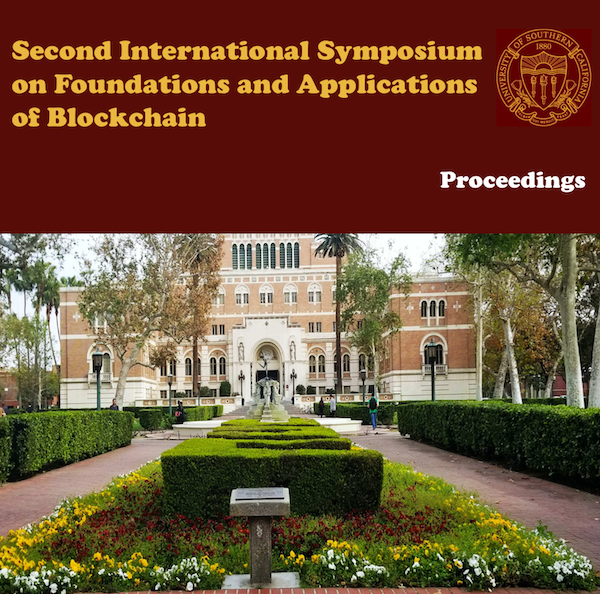
Abstract: Exploring Blockchain-based smart contracts:
We explore how blockchain-based smart contracts may automate the monitoring and execution of demurrage clauses in logistics. Building on the legal framework for the ocean transportation of bulk commodities, we outline the benefits and challenges in streamlining the demurrage process. Our findings suggest that while many of the contractual clauses relating to demurrage can be resolved algorithmically by remote sensing data, the need for subjective human opinion remains. The main challenge in adopting smart contracts is the reliance on ‘trustworthy’ off-chain resources and the difficulties in aligning the interests of participants in the system. Our analysis is important as an input to ongoing industry initiatives in the design of blockchain applications for supply chain management.
Introduction to transportation contracts
Transportation contracts typically include a “laytime and demurrage” clause in order to allocate the cost of delays caused by prevalent risks such as terminal congestion or strikes, in addition to the typical case of cargo being delayed. The term demurrage, which originated in ocean transportation and now extends to other transportation modes, refers to the “penalty payment” for the extended time period that the transportation capacity (be it a vessel, container or railroad car) remains in possession of the charterer (shipper) after the agreed period allowed for
loading and unloading (laytime). Accordingly, demurrage is a potential payment from the user of the transportation asset to its disponent owner. It is a source of revenue used to off- set per diem on transportation capacity held solely for the benefit of customers and thus can be viewed as extended freight (Jia and Adland, 2018).
The occurrence and realization of demurrage is subject to conditions and provisions that are outlined in the contract. Complicating factors include operational procedures, such as when to give Notice of Readiness (NOR) to commence laytime (i.e. the contracted time for loading and discharge), and the large number of stakeholders involved (shipowner, port authority, charterer, agents and/or cargo owner). Most importantly, contracts tend to use ambiguous language, creating disagreements over what is said in the laytime and demurrage clauses. Sometimes a comma can make a difference. For instance, a typical phrase may look like:
“Cargo to be furnished and received by ship at port of loading as fast as vessel can receive in ordinary working hours, and to be received from alongside ship at port of discharge as customary as fast as steamer can deliver in ordinary working hours.”
As a consequence, demurrage is arguably one of the most disputed contractual terms in the transportation industry (Summerskill, 1989). In cases when disputes arise, the interpretation of these conditions is left to arbitrators, lawyers and the courts. This is not only a concern to the contractual parties directly involved in the transportation service, but also to importers and freight forwarders as it relates to documentation and clearance of goods at ports. For instance, there has been reports of increasing congestion in US seaports due to idle containers (Mongelluzzo, 2000a, b). Mongelluzzo and Bonney (2014) reported an increasing number of complaints by truckers and shippers about demurrage penalties in US ports. Indeed, there is currently a US shipper-driven petition seeking policy guidelines that would make it easier to challenge demurrage and detention (Bonney, 2018). Veenstra (2015) argues that demurrage (and detention) can cause a general delay in the global supply chain. As a consequence, it is recognized by industry organizations and individuals that improved clarity and precision is vital (Laffaye, 2013).
Smart contracts can potentially resolve some of these challenges by virtue of reducing or eliminating ambiguities in the execution and encouraging better information sharing among stakeholders. A smart contract, the term of which was first coined by cryptographer Nick Szabo (Szabo, 1994), is a set of promises, specified in digital form, including protocols within which the parties perform on these promises (Szabo, 1996). It is a computer protocol based on if-then statements intended to digitally facilitate, verify, or enforce the negotiation or performance of a contract. When a pre- programmed condition is triggered, the smart contract automatically executes the corresponding contractual clause. Blockchain technology, with key features such as distributed consensus mechanisms and near-tamper-proof data records, provides an interesting platform for smart contracts, and may ultimately facilitate a move from automated contracts to truly autonomous smart contracts capable of self-execution and self-enforcement.
The objective and contribution of this paper is to explore the application of smart contracts to execute the laytime and demurrage clause in ocean transportation. We identify and discuss the various legal, technical, and business issues in relation to the use of blockchain-based smart contracts for managing laytime calculations and demurrage payments. In a wider context, our research also highlights the inefficiency caused by the concept of demurrage, both in terms of productivity, legal costs and environmental issues. We find that the main advantage of smart contracts is that they force the use of precise contractual terms in place of the current ambiguous common-law terms that are the source of most disputes. Their use may also lead to greater standardization of ocean freight contracts, reducing the time and cost for their negotiation and drafting. Our research is important for the design and evaluation of blockchain-based applications for the ocean transportation industry.
The remainder of the paper is organized as follows. Section two reviews legal framework for demurrage. Section three outlines the architecture for a smart contract on demurrage. Section four discusses the challenges and managerial implications. Section five concludes and presents challenges for future research.
Download the paper below.